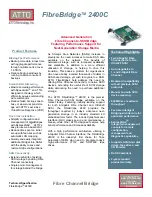
CHIP REVISION INFORMATION
Chip Logical Device Chip
Type ID ID Revision
------------------- ------- ------ --------
Memory Controller 0 4032 0020
Root Bridge 0 4030 0020
Host Bridge 0000 122e 0032
Host Bridge 0002 122e 0032
Host Bridge 0003 12ee 0011
Host Bridge 0006 12ee 0011
Host Bridge 0007 12ee 0011
Other Bridge 0 0 0030
Other Bridge 0 0 5003
Baseboard MC 0 0 0506
SYSTEM SECURITY CONFIGURATION
Trusted Boot: Not Supported
TPM: Activated
TPM Next Boot Status: Activated
TPM Vendor ID: 0x15D1
TPM Product ID: 0x0006
TPM TCG Spec Version: 1.1.0.0
Shell>
Installation Troubleshooting
This section provides basic server troubleshooting information. It is designed to help you diagnose
common issues that can occur during server installation, and addresses the following topics:
•
“Troubleshooting Methodology” (page 83)
•
“Server Does Not Power On” (page 84)
•
“Troubleshooting Using the Server Power Button” (page 84)
•
“EFI Menu is Not Available” (page 85)
•
“Operating System Does Not Boot” (page 85)
•
“Operating System Boots with Problems” (page 85)
•
“Intermittent Server Problems” (page 85)
•
“DVD Problems” (page 85)
•
“Hard Drive Problems” (page 86)
•
“Console Problems” (page 86)
•
“Downloading and Installing the Latest Version of the Firmware” (page 86)
Troubleshooting Methodology
The server was tested prior to shipping. Failures encountered during installation can be due to
damage that occurred in transit. Re-seating connectors can clear problems that result from rough
handling. If you are installing components or assemblies, compatibility problems or incorrect
installations can be the cause of the problems. If you are installing components or assemblies,
check that items are correctly installed and that all connectors are fully engaged. If the unit does
not power on, check the power source before proceeding.
If a problem is encountered during initial operation, remove any add-in or optional components
and retest the server before continuing. Verify basic server operation before installing additional
cards and configuring software and hardware for the server requirements.
Troubleshooting is based on observation of server status indications and error messages, and by
checking system event logs. You can observe the LED indicators on the front and rear of the
server. Error messages are displayed on local and remote consoles. System history (console,
event, and history logs) is available through the iLO 2 MP, and is accessed through the console.
Additional information about troubleshooting is available on the CD provided with the server.
Installation Troubleshooting
83
















































